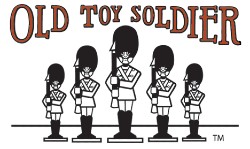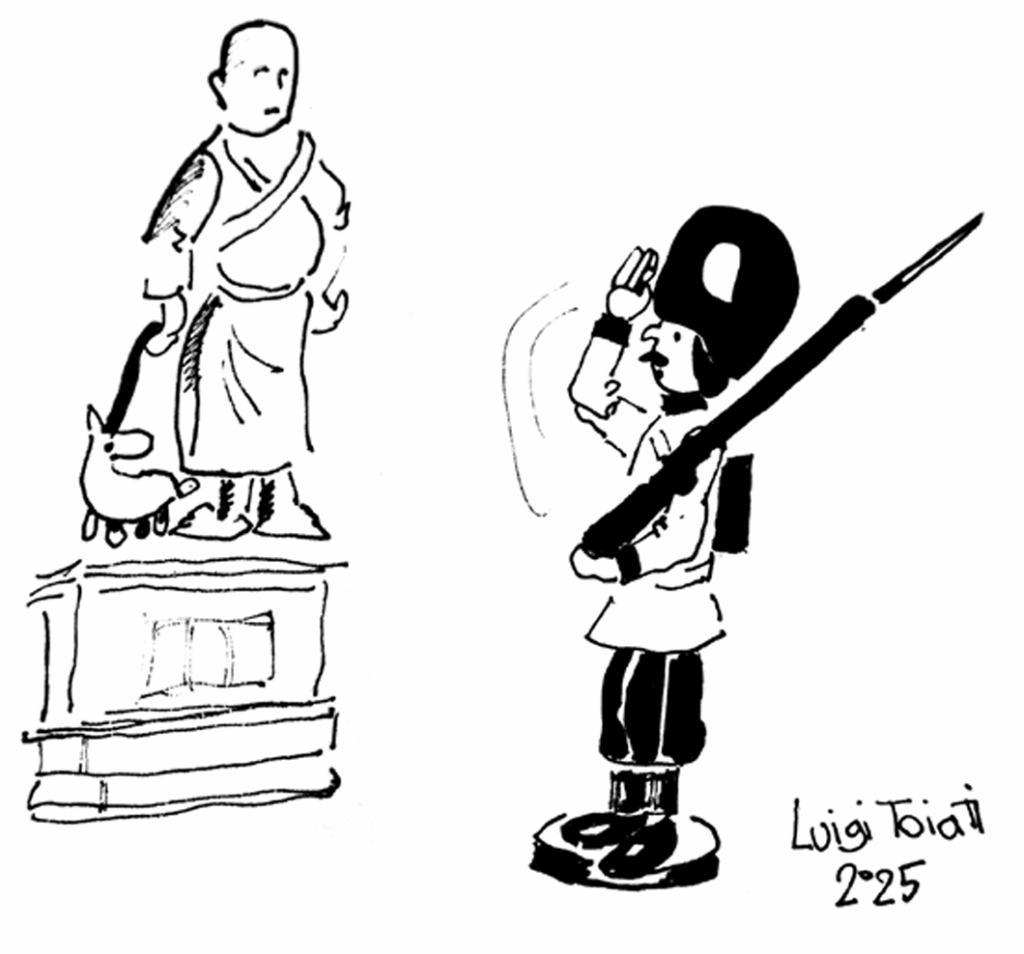
While I was reorganizing my collection of flat figures, I recently came across a series of Asians. I took the opportunity to take a closer look at them. The usual questions immediately came to mind. When and where does the scene take place, what does it represent? Where and when were the figures produced and who could have made them?
But let’s take things one at a time. The figures have a typical Japanese hairstyle and are dressed in the fashion of the 1900s. The scene takes place outdoors, apparently in a park. Is it any park scene or a specific park? I couldn’t match the buildings to any model. I couldn’t see anything typical about them either. The monument looks curious to me.


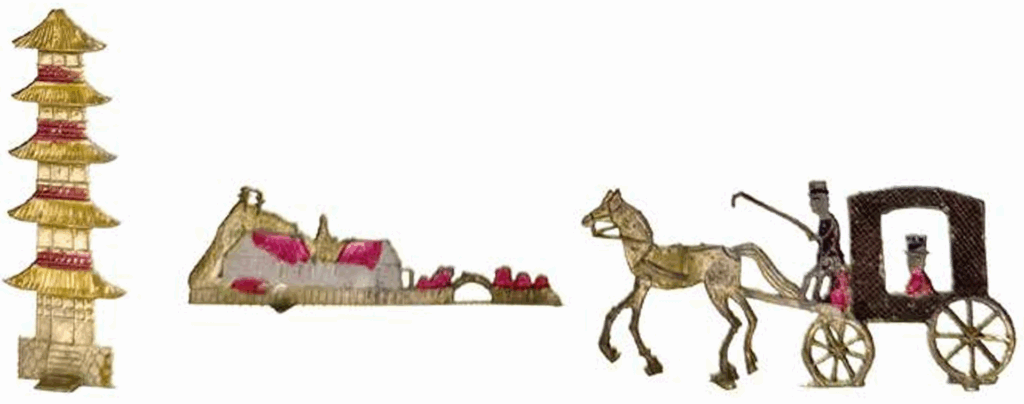
His coat looks like that it probably represents a monk? But walking with a dog and carrying a weapon? After some research on the Internet, I came across the original of the monument. The bronze statue still stands in Tokyo’s Ueno Park and represents the samurai Saigo Takamori. One of the people in a black coat and top hat appears to be pointing to the monument and I suspect that this series of figures represents the inauguration of the monument in 1898. The life and the entire historical story of Saigo Takamori, who is referred to as the last real samurai, attracted attention far beyond Japan’s borders even at that time. In our time, for example, he also provided part of the basis for the film “The Last Samurai” with Tom Cruise.
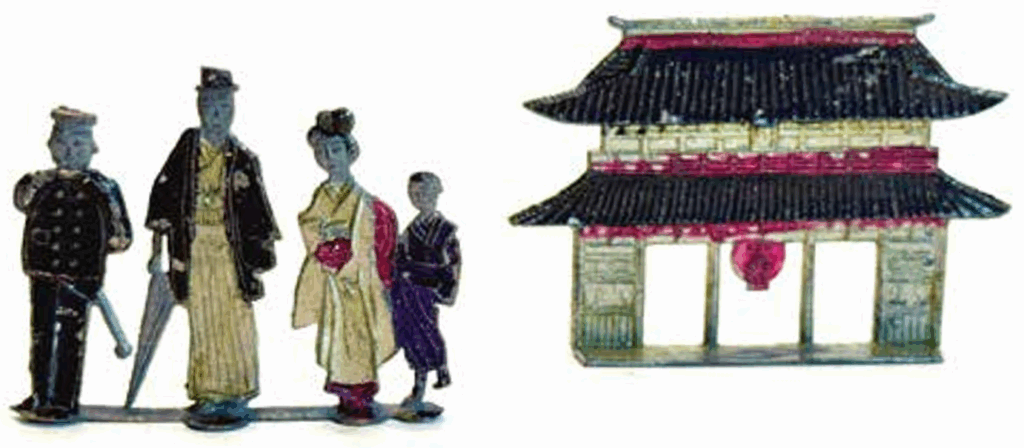
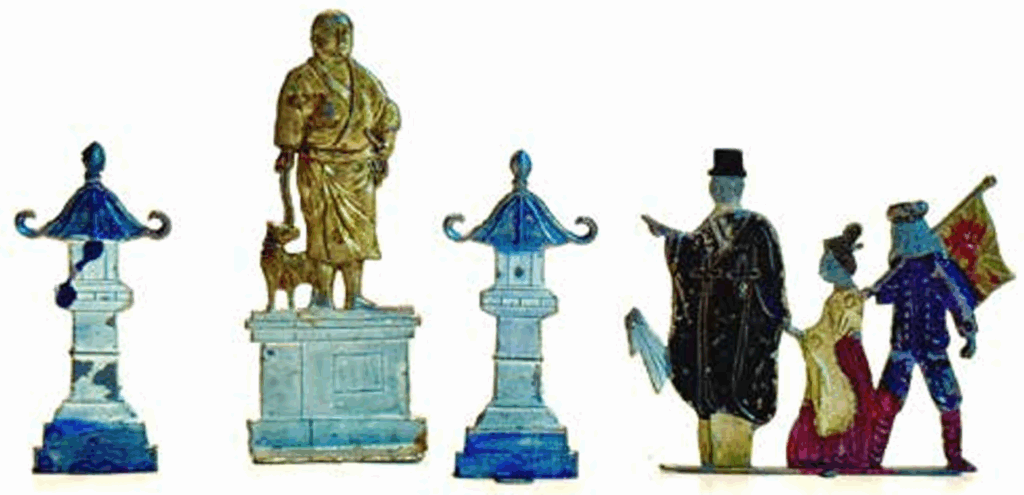
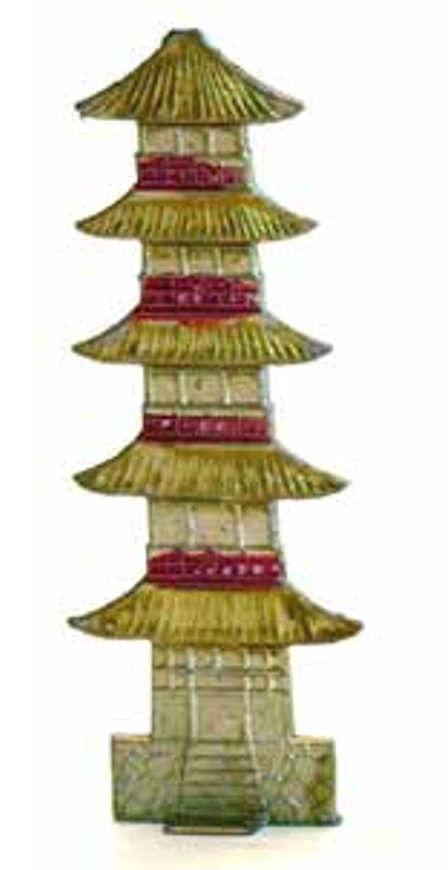
Saigo Takamori was very influential and is often called the last true samurai. He had many talents, for example he founded a military academy, led 15,000 Japanese f ighters in the Satsuma Rebellion of 1877 and also published poems under the name Saigo Nanshu. He was a very exciting personality and his life story inspired many people around the world, including me.
The flat-figures, the carriage and the buildings, are very reminiscent of the products of the New York Toy manufacturer Peter Pia of that time. The engraving style, the proportions, the feel of the figures and also the painting point in this direction. I was able to acquire the figures a few years ago at the Chicago Show. If a reader can provide any further information or insights about these figures, I would be happy to hear from you.
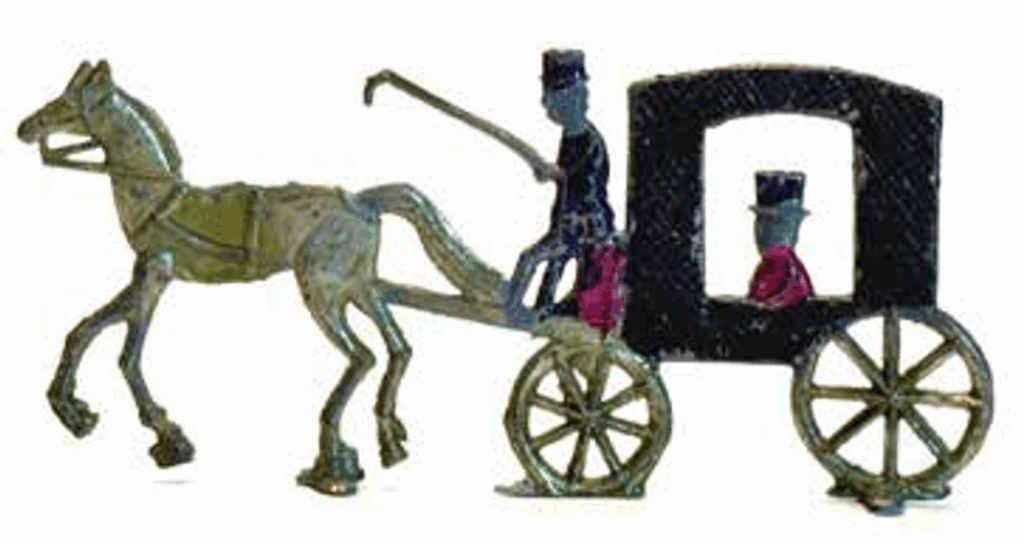
Ever keen to ensure the authenticity of his articles, Gisbert travelled to Japan to check out a few details! He sent in these last minute additions.
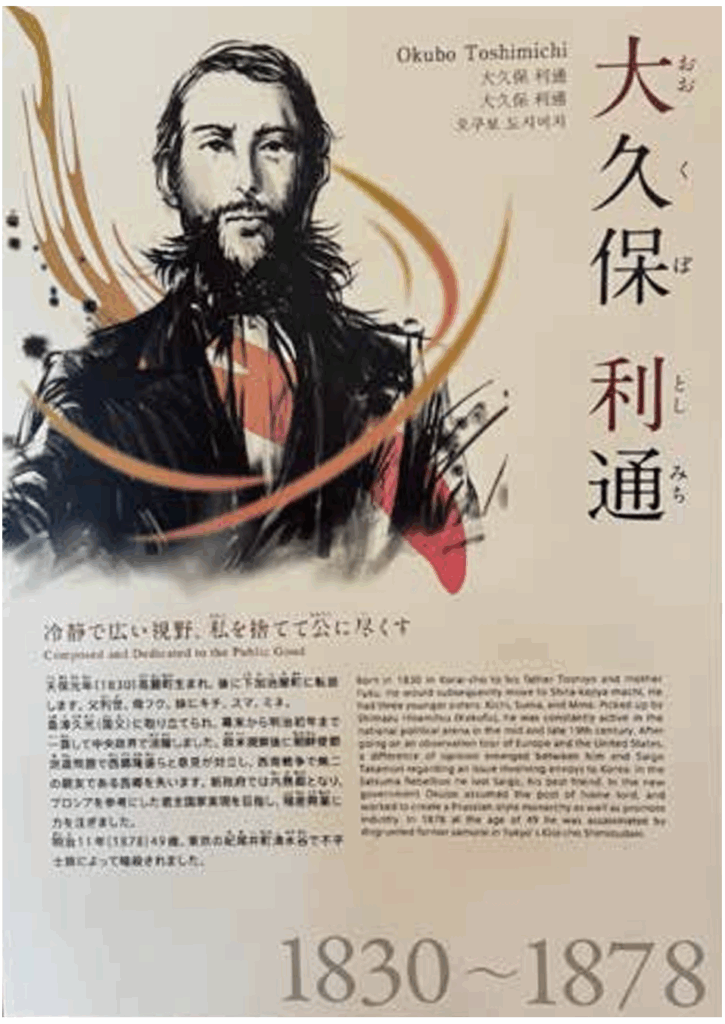

While on a trip to Japan I decided to try to find out more about Saigo. First, I tracked down his statue in Tokyo. Here is the real thing!
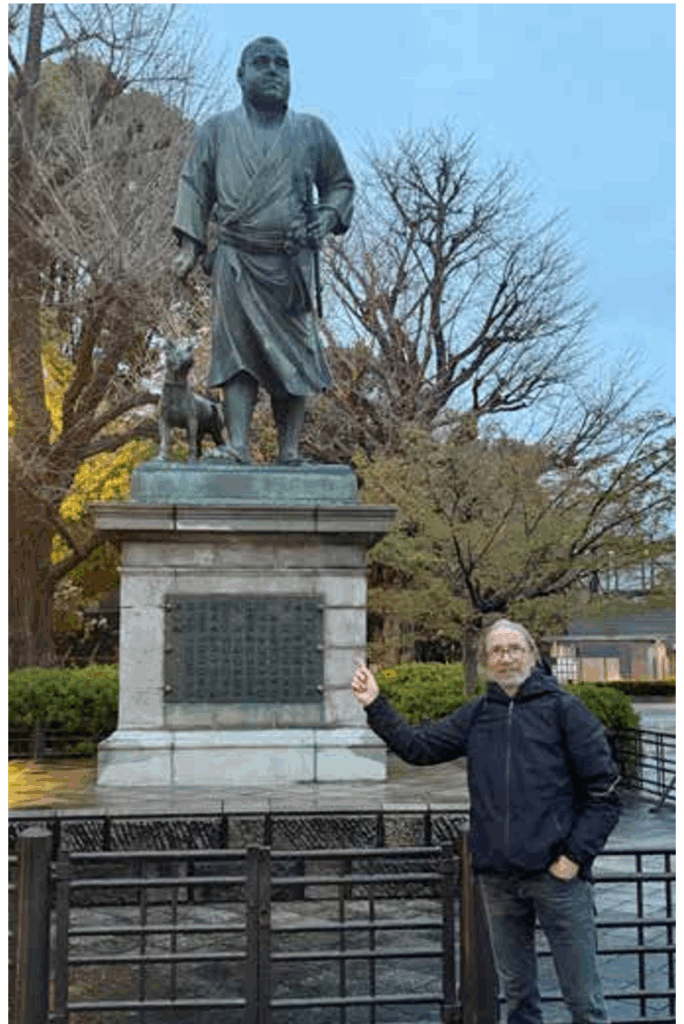
I followed this up with a trip to Kagoshima, where he lived. Here I found another monument celebrating Saigo Takamori. The size is 230 inch and illustrates his importance. He was 70 inches tall, which in 1860 was more than 8 inches taller than the average height of Japanese men. In Kagoshima there is also a very interesting museum about the Meiji Restoration, in which he played an important role. This museum also had information which enabled me possibly to identify the man in the frock coat and top hat as Okubo Toshimichi. The following two images provide further interesting information on both characters.
